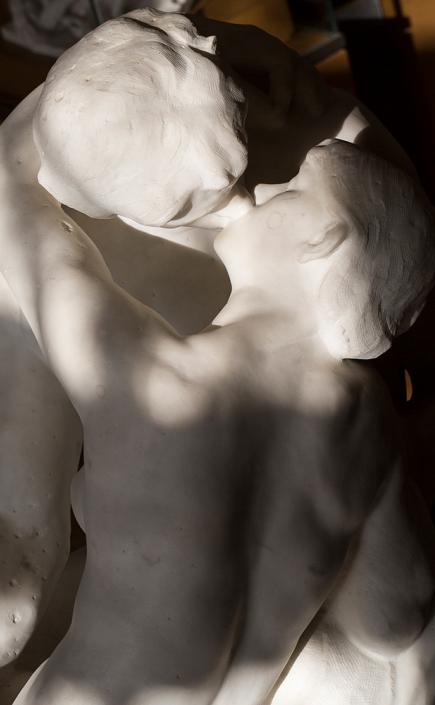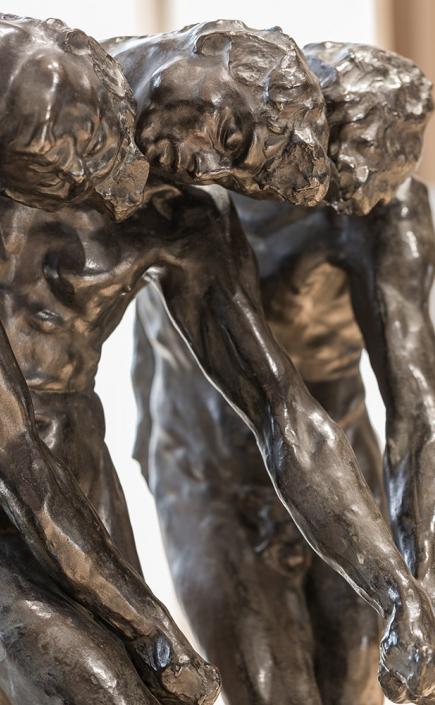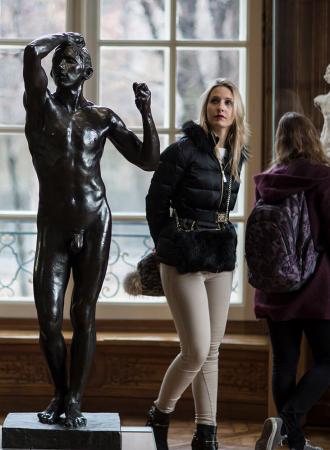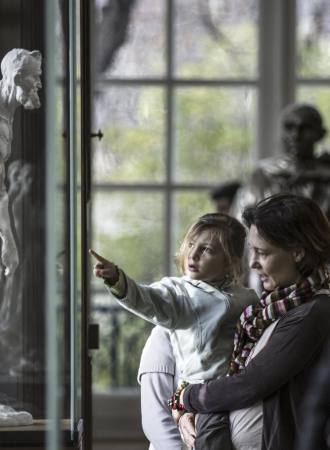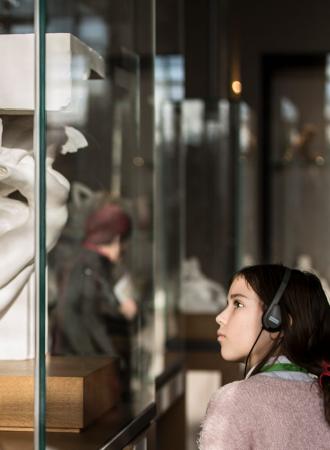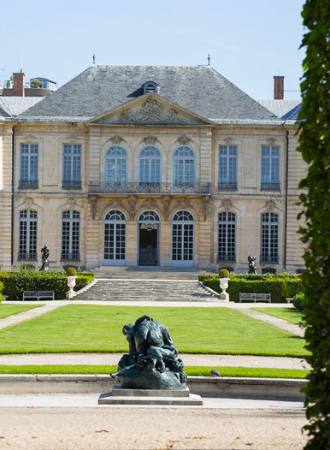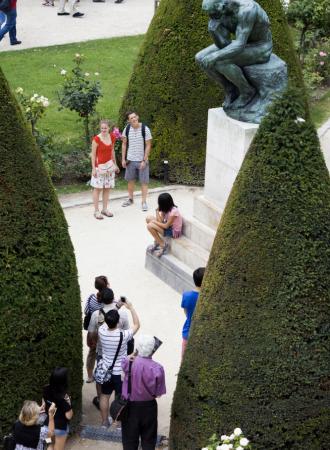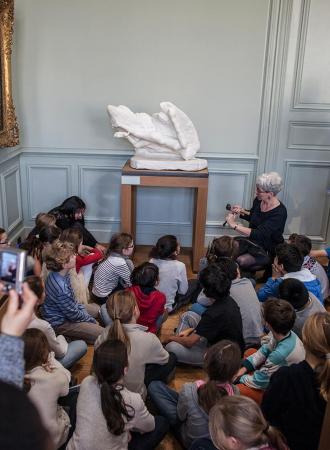Search the site
Two Semi-Reclining Female Nudes
Auguste Rodin (1840-1917)
From 1900 onwards, when Rodin was particularly pleased with the position or movement of a figure in one of his drawings, he sometimes cut it out to use it again elsewhere. He thus compiled a stock of cut-out figures taken from his own drawings. He would then choose two or three of these figures and combine them to create a new composition. When he had finalized the new design, he used tracing paper to transfer it to another sheet of paper, which he then painted in watercolor.
Two Semi-Reclining Female Nudes resulted from this kind of assemblage. To add relief to his composition, Rodin positioned the arm of one of the women over the other’s legs. Like all the cut-out paper figures in the museum’s collection, these were mounted on a support after the artist’s death.
Rodin probably intended to use this assemblage of figures in a new watercolor painting. The use of scissors instead of paintbrushes and pencils was widely taken up a few years later, particularly in the Cubist papiers collés, in the cut-out gouaches from the later career of Henri Matisse (1869-1954), and in the torn paper and drawings that Jean Arp (1886-1966) used to make his Constellations in the 1930s.
Discover the themes related to the work
Completion date :
About 1900
Dimensions :
H. 32.6 cm; W. 26.2 cm
Materials :
Pencil and watercolor on paper, cut out and assembled
Inventory number :
D.05192
Credits :
© musée Rodin - photo Jean de Calan
Additional information
Iconography
- Two Semi-Reclining Female Nudes(zip, 593.7 ko)
